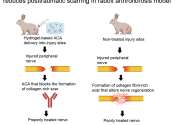Weight-bearing activity ups incident knee osteoarthritis in people with low lower-limb muscle mass: Study
Weight-bearing activity appears tied to incident knee osteoarthritis (OA) in people who have low levels of lower-limb muscle mass, according to a study published online April 30 in JAMA Network Open.
May 1, 2024
0
9








